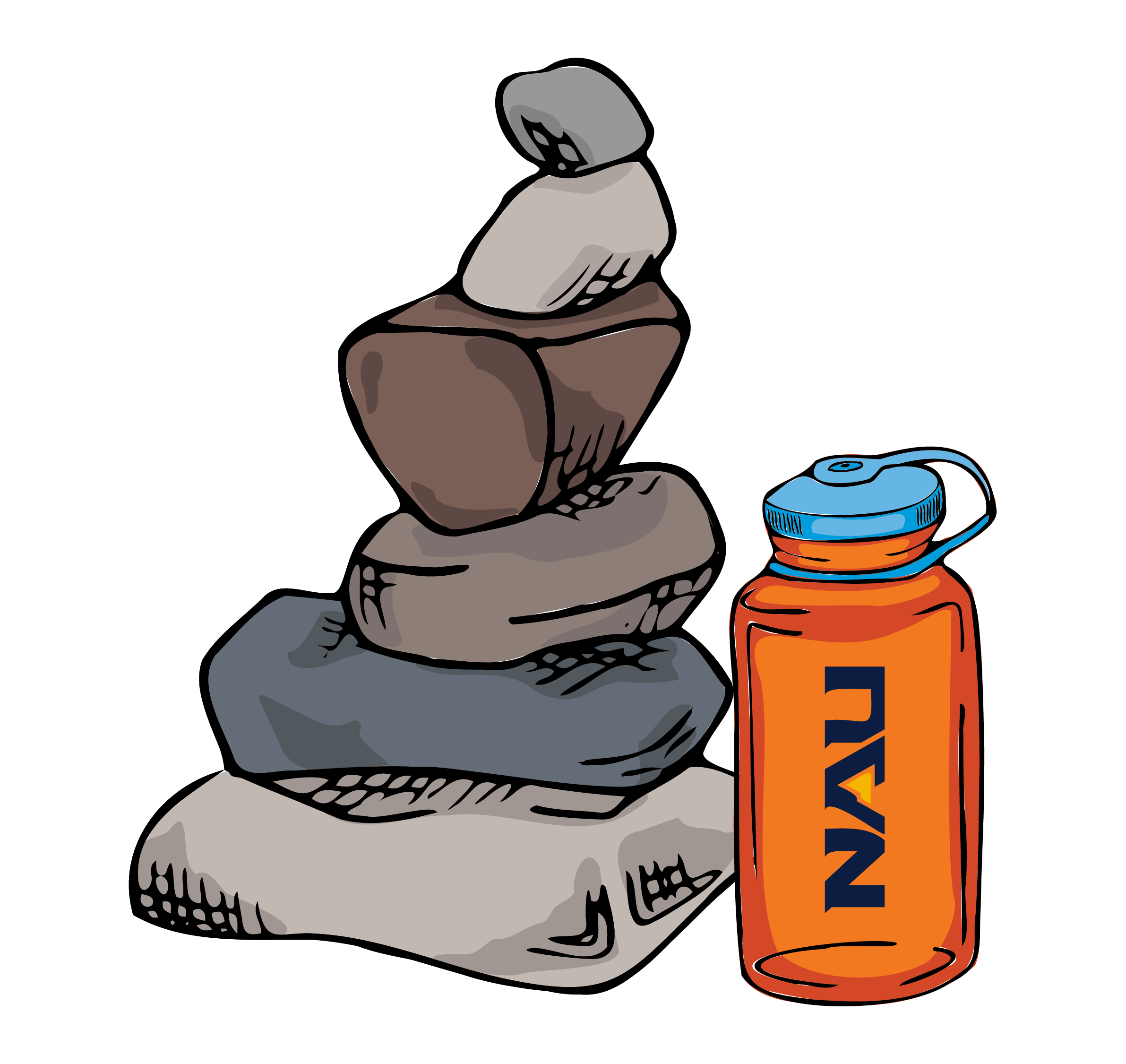Safety
At NAU, your safety matters and it’s part of how we support you. We offer tools, people, programs (like TAMT, NAU Safe, Safe Walk), and campus resources to help you know what to do, where to go, and who to contact when you need support.

At NAU, we have a team focused on keeping students, staff, and visitors safe. It’s called the Threat Assessment and Management Team (TAMT).
The team brings together people from across campus including campus police, Human Resources, Student Affairs, and legal. Depending on the situation, others may step in too. They connect and work with local partners when necessary to make sure the response fits the situation.
It’s important to know who to contact when something happens. Whether it’s about health, safety, or another urgent need, the emergency and campus resources guide helps you find the right people to call and what to do next on campus or nearby.
NAU Safe
NAU Safe is the official app for safety at NAU. It includes alerts, emergency tools, safety tips, and other features to help you stay informed and know what to do when needed.
Safe Walk Program
If you don’t want to walk alone at night, you can request an escort. The Safe Walk Program is available every night from dusk to dawn. You can use it when going to or from places on campus.
From Thursday to Saturday, escorts are available from 9 p.m. to 3 a.m. On Sunday through Wednesday, they’re available from 8 p.m. to midnight. At other times, patrol officers or police aides can help.
Campus Living Communities
Each living community has a system to help everyone feel secure. Exterior doors stay locked and can only be opened with a JacksCard by people who live there. When you scan your card, the door unlocks and then closes and locks behind you. Student rooms have their own locks and keys.
Crisis intervention support is also available on campus living communities through on-call Community Assistants or Community Coordinators. If needed, students can also request a change in housing.
NAU Police Department
The NAU Police work on the Flagstaff campus and other NAU-owned areas. Officers are certified by the state and carry the same authority as Arizona law enforcement. They respond to calls, handle reports, and support campus safety. They also provide safety videos and 360º Stay Safe™ videos covering various topics related to student safety.
Student rights and responsibilities
The Office of Student Rights and Responsibilities helps students understand expectations and make choices that align with being part of the NAU community. We also support faculty and staff with student concerns and help guide students through the conduct process when needed.
Students who have experienced gender-based harm can connect with the Title IX Coordinator for help reporting concerns to the university or police.
Emergency management at NAU
The Office of Emergency Management works on planning and preparing before emergencies happen. It is part of NAU Police. The office helps the campus respond when something happens and supports recovery after. Everyone is encouraged to take part in learning what to do and how to be ready.
Clery Act
Northern Arizona University complies with the Jeanne Clery Disclosure of Campus Security Policy and Campus Crime Statistics Act, or Clery Act, a federal statute requiring all colleges and universities that participate in federal financial aid programs to compile crime statistics from their campuses and provide safety information. Disclosures about crime statistics and policy statements are made by October 1 each year in an Annual Security Report and ongoing disclosures about specific crimes and emergencies are made available throughout the year.
The Clery Act requires institutions to disclose four general categories of crime statistics. The Clery Act requires that all Clery reportable crimes be identified by geographic location. The definitions for these geographic categories are Clery Act specific and are the same for every institution regardless of its physical size or configuration.
Criminal offenses
- Murder and non-negligent manslaughter
- Manslaughter by negligence
- Sexual assault: rape, fondling, incest, and statutory
- Rape
- Robbery
- Aggravated assault
- Burglary
- Motor vehicle theft
- Arson
- Hazing
Hate crimes
A hate crime is a criminal offense that manifests evidence that the victim was intentionally selected because of the perpetrator’s bias against the victim. Bias is an expressed negative opinion or attitude toward a group of persons based on actual or perceived race, gender, gender identity, religion, disability, sexual orientation, ethnicity or national origin.
For Clery Act purposes, Hate Crimes include any of the following offenses that are motivated by bias.
- Murder and non-negligent manslaughter
- Sexual assault: rape, fondling, incest, and statutory rape
- Robbery
- Aggravated assault
- Burglary
- Motor vehicle theft
- Arson
- Larceny, theft
- Simple assault
- Intimidation
- Destruction/damage/vandalism of property
Violence Against Women Act (VAWA) offenses
- Dating violence
- Domestic violence
- Stalking
Arrest and referrals
The number of arrests and the number of persons referred for disciplinary action for the following law violations:
- Weapons: carrying, possessing, etc.
- Drug abuse violations
- Liquor law violations
On campus
Any building or property owned or controlled by an institution within the same reasonably contiguous geographic area and used by the institution in direct support of, or in a manner related to, the institution’s educational purposes, including residence halls; and
Any building or property that is within or reasonably contiguous to the area identified in paragraph (1) of this definition, that is owned by the institution but controlled by another person, is frequently used by students, and supports institutional purposes (such as a food or other retail vendor).
On campus student housing
Any student housing facility that is owned or controlled by the institution, or is located on property that is owned or controlled by the institution, and is within the reasonably contiguous geographic area that makes up the campus is considered an on campus student housing facility.
Public property
All public property, including thoroughfares, streets, sidewalks, and parking facilities, that is within the campus, or immediately adjacent to and accessible from the campus.
Non campus
Any building or property owned or controlled by a student organization that is officially recognized by the institution; or
Any building or property owned or controlled by an institution that is used in direct support of, or in relation to, the institution’s educational purposes, is frequently used by students, and is not within the same reasonably contiguous geographic area of the institution.
Northern Arizona University obtains reportable crime statistics associated with its Clery geography by collecting information from a variety of individuals and organizations that Clery considers to be Campus Security Authorities (CSAs). In addition, the University requests crime and arrest statistics from local law enforcement agencies. The crime statistics disclosed in the University’s Annual Security Report are statistics based on reports of alleged criminal incidents. Under Clery, it is not necessary for the crime to have been investigated by the police or a CSA, nor must a finding of guilt or responsibility be made to include the reported crime in NAU’s crime statistics.
For questions regarding CSAs, statistics, reporting, or other Clery related questions, please contact NAU’s Director of Clery Compliance, Alicia Beekman at alicia.beekman@nau.edu or 928-523-3611

What's next on your trail to NAU?


Find your home at NAU!
Looking for attainable and valuable degree programs? Searching for a community as unique as you are? Wishing for adventure? Explore all your passions at NAU.
